Ancient Psychedelia: Alien Gods & Mushroom Goddesses
Online Book - Chapter 19, Page 366
Back to Online Book Mainpage / Next Page (Chapter 19, Page 367)
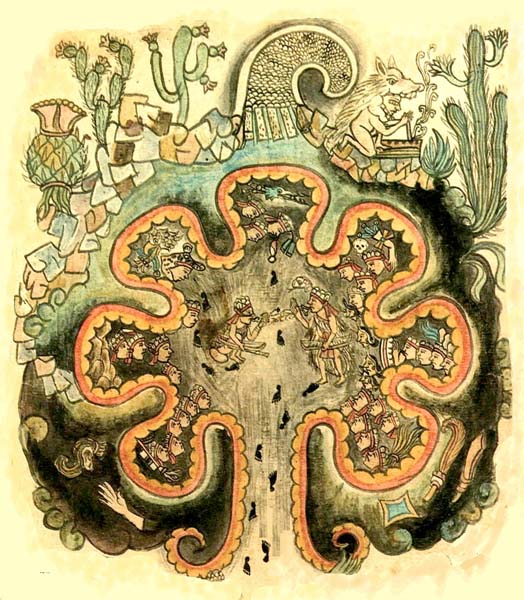 (75f) The seven caves of Chicomoztoc from Historia Tolteca-Chichimeca The Meso-American god Quetzalcoatl, (Mayan Kukulcan) was a feathered serpent. In other words, a combination of a bird and a serpent, the same as a dragon. He was originally conceived as a vegetation god, though he was also associated with the wind. During Aztec times (14th to 16th centuries) he became associated with Venus or the Mo(u)rning Star. (25) The name Ku Kulcan can be broken down to Ku, which means “god” in the Mayan language and can, which means “serpent.” This translates to the “God Serpent” who was the great ruler and builder of Chichen Itza. (26) A wall panel recreation of an ancient “ball game scene” which is claimed to be a “sacrifice,” reveals a number of mushrooms in the design work (76c). Similarly, the name Kinchahan, another principle god of the Mayans, breaks down to Kin which means “sun” in the Mayan language and Chahan which is another form of the word Can, meaning serpent. Therefore, Kinchahan is the “Sun Serpent.” (27)  (76c) Chichén Itzá Sacrifice at the "Ball Game" Reproduction from Original Stele If we compare a couple images, one that has been described as a “sacrificed ball player” in the Anthropology Museum of Xalapa, Mexico (76e), the seven serpent heads looks awfully similar to the seven headed naga from India (18c). |
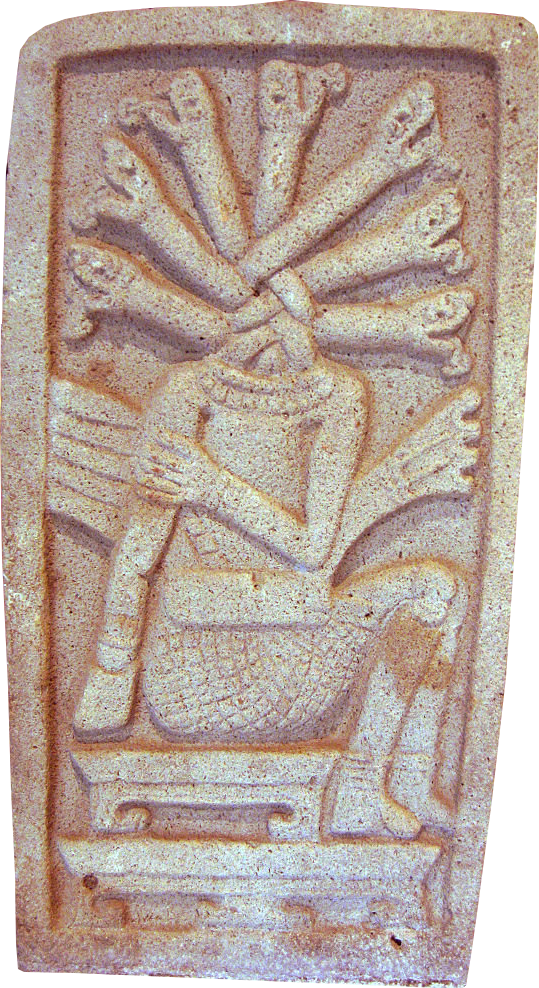 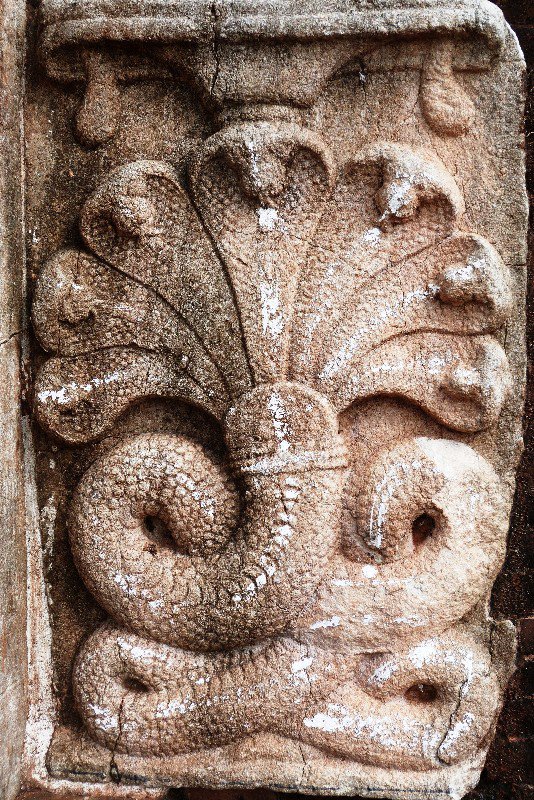 R: (18c) Seven Headed Naga L: (43h) Titans Atlas and Prometheus Laconian black-figure amphora c. 600-500 BC 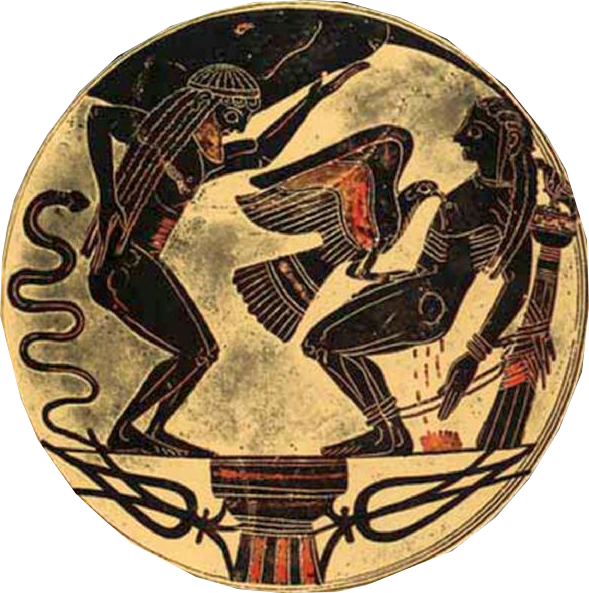 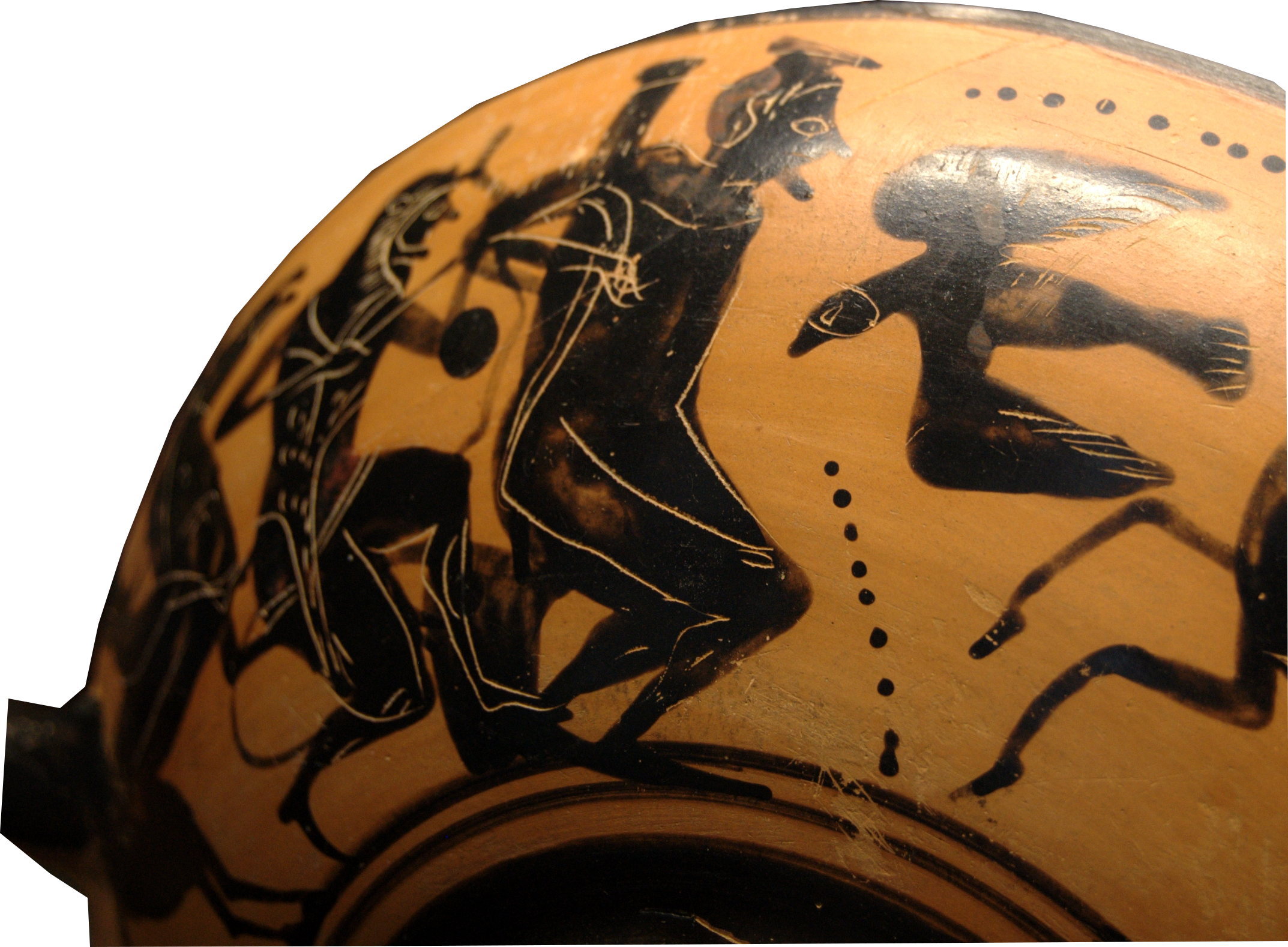 R: (43g) Prometheus. Attic black-figure cup c. 500 BC In fact, the sacrifice scenes from Mexican artwork portray the same mythology as the Greek versions of boiling Dionysos in a pot or cauldron, or witches cooking children. Humans looking characters are sitting in pots as if they are being cooked and eaten, though with perfectly happy looks on their faces, and some of them are having their hearts ripped out (76a), which is reminiscent of Perseus having his liver pecked out by an eagle as his punishment by Zeus (43g, h). These scenes are the same “sacrifices” we see in Christian art such as that pictured in the Holkham Bible Picture Book (76b). 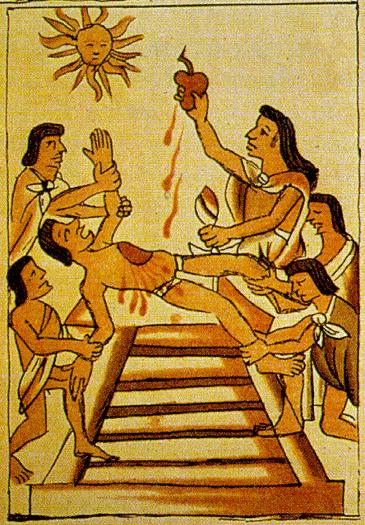 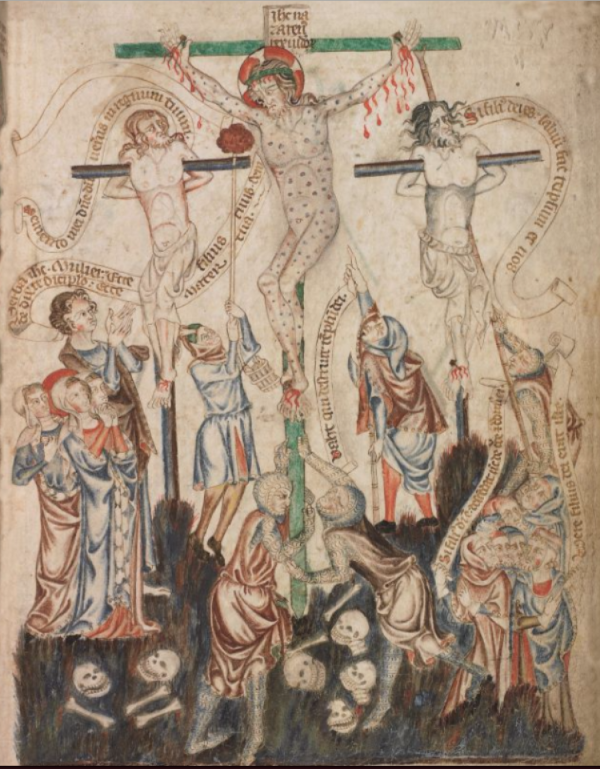 R: (76b) Crucifixion in the Holkham Bible Picture Book Folio-32 (25) Danzel, Vol. 1, p. 39). Page 204) (https://www.britannica.com/topic/Quetzalcoatl (26) Ophiolatreia: The Rites and Mysteries Connected with the Origin, Rise and Development of Serpent Worship in Various Parts of the World, Privately Printed 1889, Tudor Press Reprint 1980, p. 66 (27) Ophiolatreia, p. 66 |
Go Back to Page 365